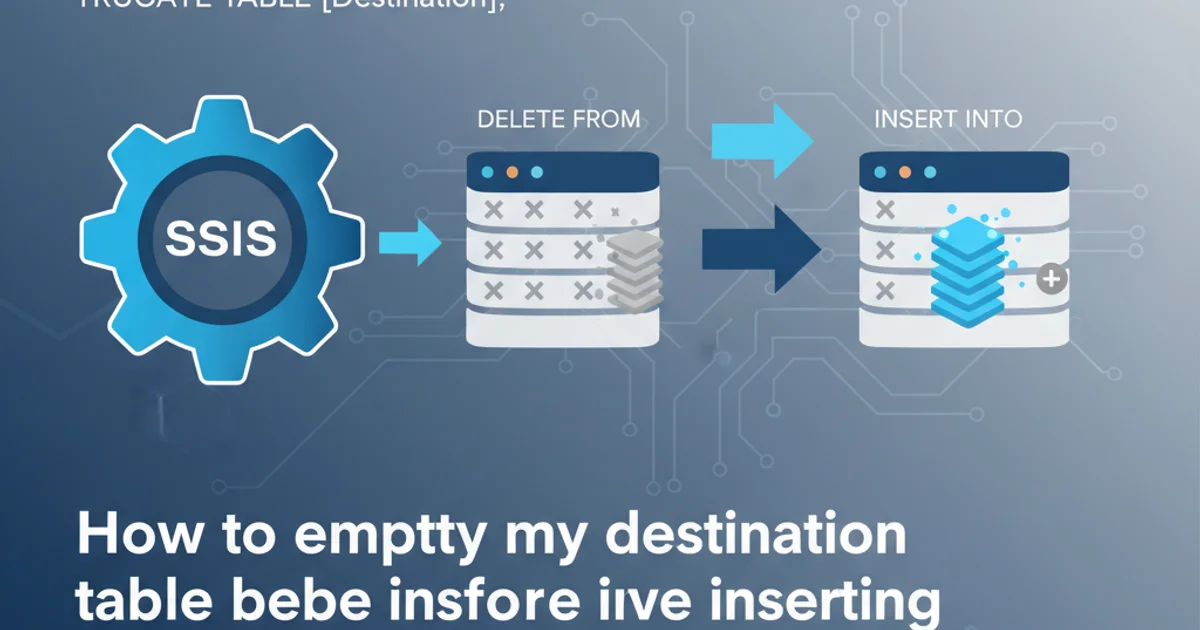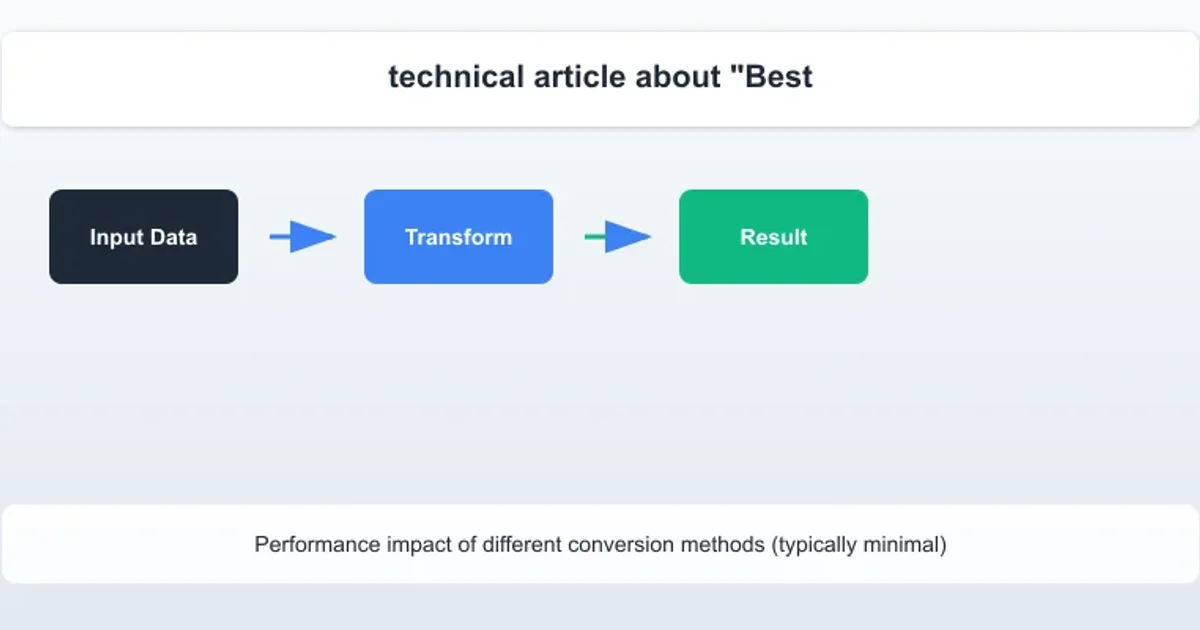Best way to convert INT to BIT
Categories:
Converting INT to BIT in SQL Server: Best Practices and Methods

Explore the most efficient and semantically correct ways to convert integer values to the BIT data type in SQL Server, ensuring data integrity and readability.
In SQL Server, the BIT data type is used to store boolean values, typically represented as 0 or 1. While BIT is ideal for true/false or yes/no scenarios, data often originates in other integer formats. Converting an INT to a BIT requires careful consideration to ensure the conversion is both accurate and handles edge cases gracefully. This article will guide you through the best methods for performing this conversion, focusing on clarity, performance, and correctness.
Understanding the BIT Data Type
The BIT data type in SQL Server can store 0, 1, or NULL. It's optimized for boolean logic and takes up very little storage space (up to 8 BIT columns in a table can be stored as 1 byte). When converting an INT to BIT, SQL Server implicitly treats any non-zero integer as 1 (true) and 0 as 0 (false). However, relying solely on implicit conversion can sometimes lead to unexpected results or make code less readable. Explicit conversion methods offer more control and clarity.
flowchart TD
A[Start with INT value] --> B{Is INT value 0?}
B -- Yes --> C[Result: 0 (False)]
B -- No --> D[Result: 1 (True)]
C --> E[End]
D --> E[End]Logical flow for INT to BIT conversion
Method 1: Using CAST or CONVERT
The CAST and CONVERT functions are the most common and explicit ways to change data types in SQL Server. When converting an INT to BIT, SQL Server follows a simple rule: 0 becomes 0, and any non-zero integer becomes 1. This is generally the safest and most readable approach for direct conversions.
SELECT
CAST(0 AS BIT) AS ZeroToBit,
CAST(1 AS BIT) AS OneToBit,
CAST(100 AS BIT) AS HundredToBit,
CAST(-5 AS BIT) AS NegativeToBit,
CONVERT(BIT, 0) AS ConvertZeroToBit,
CONVERT(BIT, 1) AS ConvertOneToBit;
Examples of CAST and CONVERT for INT to BIT
CAST and CONVERT behave identically for INT to BIT conversion, CAST is generally preferred for ANSI compliance and conciseness, whereas CONVERT offers more style options for other data types.Method 2: Conditional Logic (CASE Statement)
For scenarios where you need more granular control over which INT values map to 0 or 1, or if you have specific business rules (e.g., only 1 should be true, other non-zero values should be false), a CASE statement provides the flexibility. This method is particularly useful when your source INT column might contain values that you don't want to implicitly convert to 1.
SELECT
IntValue,
CASE
WHEN IntValue = 1 THEN CAST(1 AS BIT)
ELSE CAST(0 AS BIT)
END AS CustomBitConversion
FROM
(VALUES (0), (1), (2), (-1), (NULL)) AS T(IntValue);
Using a CASE statement for custom INT to BIT conversion logic
NULL values. When converting NULL to BIT using CAST or CONVERT, the result is NULL. If your business logic requires NULL to be treated as 0 (false), you'll need to explicitly handle it with ISNULL or a CASE statement.Method 3: Using a Comparison Operator
A less common but sometimes elegant way to convert an INT to BIT is by using a comparison operator. In SQL Server, a boolean expression (like IntValue = 1) evaluates to 1 (true) or 0 (false) when implicitly converted to an integer context. This result can then be explicitly CAST to BIT.
SELECT
IntValue,
CAST(IIF(IntValue = 1, 1, 0) AS BIT) AS IifToBit,
CAST(CASE WHEN IntValue > 0 THEN 1 ELSE 0 END AS BIT) AS GreaterThanZeroToBit
FROM
(VALUES (0), (1), (2), (-1), (NULL)) AS T(IntValue);
Converting INT to BIT using IIF and CASE with comparison
This method is particularly useful when you want to convert based on a specific condition, not just whether the value is zero or non-zero. For example, if you only consider positive integers as 'true'.
Performance Considerations
For simple INT to BIT conversions, the performance difference between CAST, CONVERT, and simple CASE statements is usually negligible. SQL Server's query optimizer is highly efficient at handling these basic operations. However, in very large datasets or complex queries, readability and maintainability should often take precedence over micro-optimizations.

Performance impact of different conversion methods (typically minimal)
The most important aspect is to choose the method that best reflects your intended logic and makes your code easiest to understand for future maintenance. Explicit CAST or CONVERT is generally the go-to for the standard 0/non-0 mapping, while CASE statements are for custom logic.